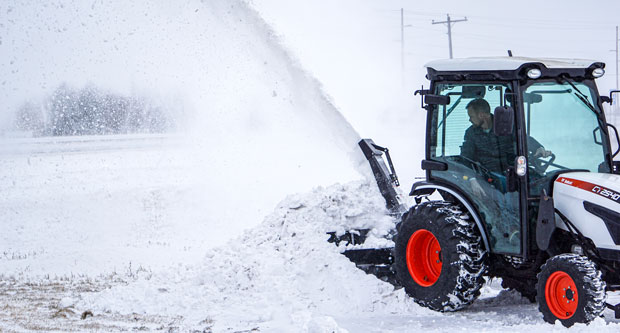 As the snow industry matures, one area that deserves more attention is what I’ll call “the snow scoreboard.” Just as the scoreboard at a sporting venue displays the game’s score, the snow scoreboard displays a snow event’s score. If the scoreboard at the ballpark were missing, it would be difficult to keep track of who’s winning and losing. Players and fans would become quickly frustrated. Nobody would stand for it. We need to take the same approach with the snow scoreboard.
As the snow industry matures, one area that deserves more attention is what I’ll call “the snow scoreboard.” Just as the scoreboard at a sporting venue displays the game’s score, the snow scoreboard displays a snow event’s score. If the scoreboard at the ballpark were missing, it would be difficult to keep track of who’s winning and losing. Players and fans would become quickly frustrated. Nobody would stand for it. We need to take the same approach with the snow scoreboard.
In my experience, snow events and snow seasons have been difficult to score. Too often, victory is claimed by surviving an event without any major equipment issues, accidents or complaints. Measurable data are nowhere to be found. The scoreboard is empty, as if someone forgot to plug it in before the game started. We need to do better than this.
With the advancement of technology and software, it’s easier than ever to build a snow scoreboard full of timely, accurate and meaningful information. Notice that I wrote “easier than ever,” not “easy.” Building any type of scorecard isn’t easy. However, the snow pros I know are up for a good challenge.
Which stats should we include? Think of a simple scoreboard at a neighborhood baseball park that only displays runs scored. For each game, this is the ultimate scoreboard metric. However, there are other statistics that matter. What about hits, walks, errors, balls, strikes and outs? What about the team’s win-loss record and the league standings? What about individual statistics? All of these statistics matter and are available. There is no reason snow professionals shouldn’t take the same approach.
What to track?
For our snow scoreboard, we want to begin with a set of high-level, composite statistics. Our scoreboard should be interactive to allow us the ability to drill down into our data and look at it by property, customer, company, segment, manager, branch, territory, crew, route, etc. We want to be able to pull whatever information we’re looking for, whenever we need it. That’s the home run.
What are the high-level, composite statistics? Companies should decide and customize their own scoreboards, but below are the stats I would recommend in several categories. Some are event-based while others are seasonal:
- Customer: Proposals, orders, customer meetings, renewals and issues.
- Financial: Revenue, gross profit, operating profit, net marketing contribution, accounts receivable, cash availability, cash position and credits.
- Human Resources: Absences, open positions, turnover and
development. - Operations: Incidents, efficiency, productivity, internal audits, average weekly field hours and event completion.
Let’s dissect one of these statistics so you can see a good example of the level of detail to be looking for. Gross profit is one of the financial stats, but gross profit of what? A robust scoreboard tied to a bank of information will produce a variety of gross profit calculations. Wouldn’t it be nice to see gross profit by event, per season, by property, salesperson, operations manager, crew, territory manager, division, branch office, customer group, marketing segment, etc.? Are you able to see this information today on your scoreboard? If not, we have some work to do.
As important as profitability is, customer metrics are even more important. Customers are satisfied when their expectations are met on a consistent basis by a proactive snow professional, which may require sacrificing gross profit on occasion. Financial stats like gross profit should never be the only scoreboard metric. Customer issues and customer meetings are the two leading indicators in this area. Lots of issues and not enough face time with customers are a recipe for disaster.
Human resources stats are important, and operational stats are critical to sustain reliable and profitable service delivery. They need to be on our scoreboard as well.
Look at your snow scoreboard. What do you see? Is it unplugged and unused? Is it simplistic like the one at the neighborhood ballpark? Or is it a fully developed, interactive scoreboard used by your snow management team to drive customer satisfaction, profitability, employee satisfaction and operational excellence?

